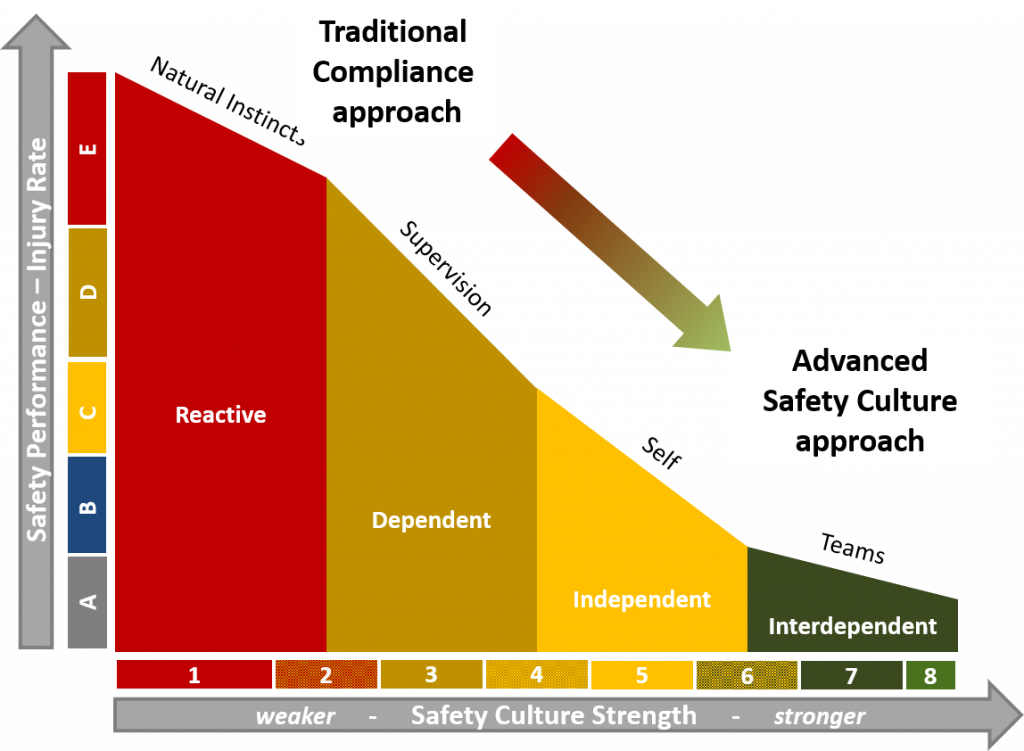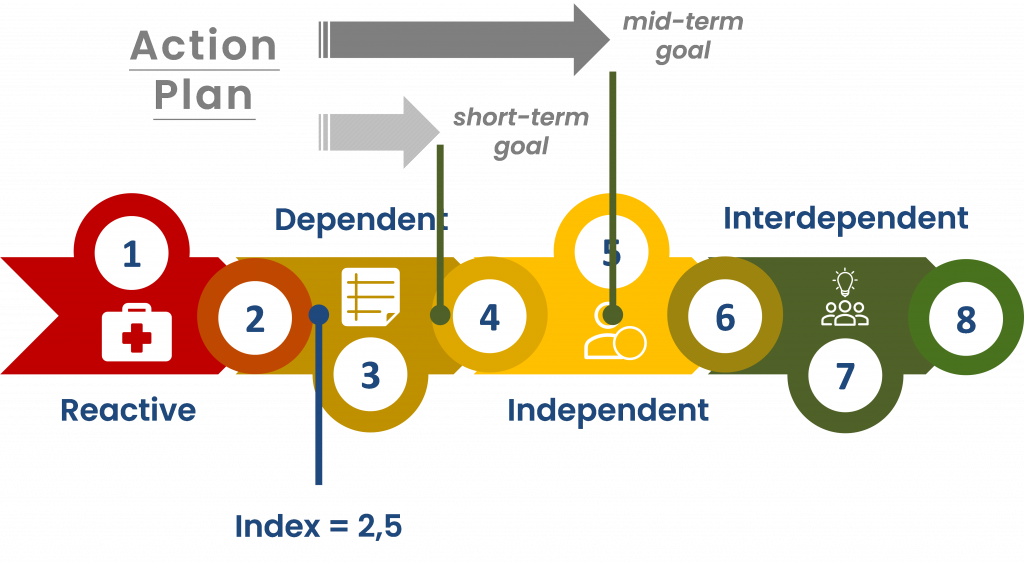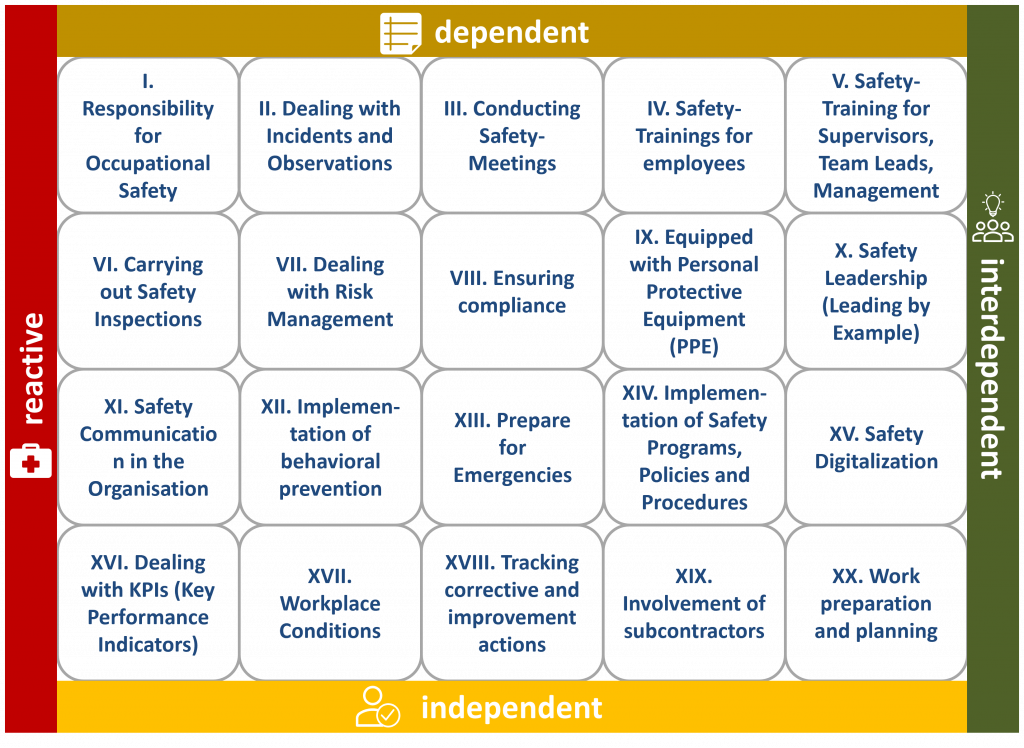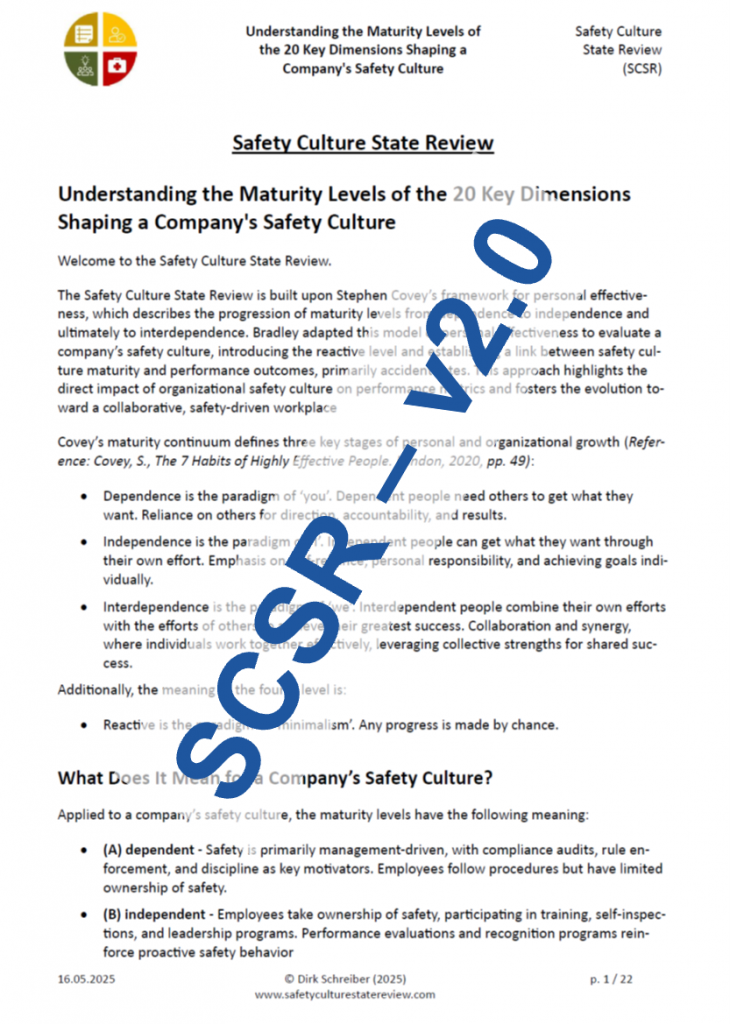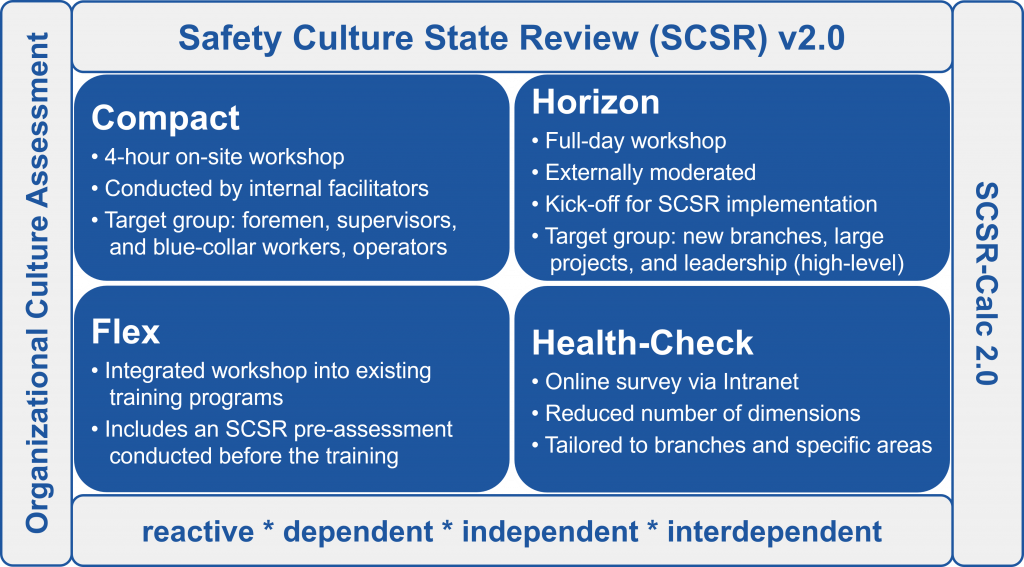Based on Covey’s maturity continuum and the Bradley Curve — adapted in the Safety Culture State Review
Introduction
The Safety Culture State Review builds on the maturity continuum developed by Stephen R. Covey, describing the development from dependence to independence and ultimately to interdependence.
The Bradley Curve™ extended this concept into the field of occupational safety by adding the reactive level and linking cultural maturity to performance outcomes such as accident rates.
Together, these perspectives illustrate how safety culture evolves — and how it directly influences organisational behaviour and performance.
Turning Maturity into Something Measurable
The Safety Culture State Review uses a clear numerical system to turn cultural maturity into a transparent and trackable indicator:
- Maturity levels on a scale from 1 to 8
- Safety performance on a scale from A to E
- Combined into the SCSR-Index
This dual-scale approach provides a structured way to measure cultural development and track performance improvements over time.
A Numerical Solution to a Cultural Challenge
Safety culture cannot be measured with absolute precision.
Yet the SCSR provides a “numerical solution to a mathematically ill-posed problem.”
It enables leaders to:
- understand their current cultural maturity
- identify strengths and gaps
- define targeted improvement actions
- track cultural progress transparently
Covey’s Maturity Continuum Expanded by Bradley’s Additional Level
Dependence — “You”
Relying on others for direction and accountability.
Limited ownership and external control.
Independence — “I”
Self-reliance, personal responsibility, proactive behaviour.
Interdependence — “We”
Collaboration, shared responsibility, collective success.
Reactive — “Minimalism”
Progress occurs only by chance.
Behaviour is inconsistent, unplanned and unpredictable.

Further reading: Covey’s maturity continuum defines three key stages of personal and organizational growth
(Reference: Covey, S., The 7 Habits of Highly Effective People. London, 2020, pp. 49):
What the Four Levels Mean in Practice
Understanding what each level means in practice helps organisations identify where they currently stand. The four maturity levels translate the abstract idea of “safety culture” into observable behaviours and organisational patterns that can be recognised in everyday operations.
(A) dependent
Safety is primarily management-driven, with compliance audits, rule enforcement, and discipline as key motivators. Employees follow procedures but have limited ownership of safety.
(B) indepentent
Employees take ownership of safety, participating in training, self-inspections, and leadership programs. Performance evaluations and recognition programs reinforce proactive safety behavior.
(C) interdependent
Teams collaborate to drive safety initiatives, defining goals, leading incident investigations, and fostering a culture of shared responsibility and continuous improvement.
(D) reactive
Safety is treated as a compliance requirement rather than a core value, with minimal effort beyond regulatory obligations. Actions are primarily reactive rather than preventive.
Employee-Driven Workshops
The four maturity levels define how safety is lived across the organisation — from reactive responses to fully interdependent collaboration.
The SCSR transforms these levels into a clear, actionable framework that organisations can apply to drive cultural transformation — from within.

